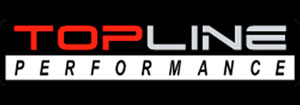This is a very good example of how evidence underpins our approach to design.. Stakeholders and sources of evidence included:.
and best practice below 550kgCO.This lower threshold is only achievable by refurbished buildings and timber structures that account for carbon sequestration and design with ambitious low carbon specifications.. Bryden Wood aspires to design new buildings that achieve at least the good practice thresholds shown in Figure 4 and where feasible deliver best practice performance.

In order to be able to meet these aspirations, it is necessary to develop a clear strategy for both embodied and operational carbon..From LETI: graphic showing the range of performance based on benchmarked projects..Comparison embodied carbon targets from RIBA, LETI and GLA.

Achieving net zero operational and embodied carbon with lean design and modern methods of construction.Bryden Wood’s strategy to achieve net zero carbon building is based on the adoption of a clear hierarchy for operational and embodied carbon..

In order to substantially reduce operational carbon, our designs will adopt the following hierarchy:.
Be Lean (passive): minimise the use of energy via passive design measures such as optimised form, orientation and window-to-wall ratio (WWR); design energy efficient facades that incorporate thermal insulation, high airtightness, external shading and solar control glazing; use of natural ventilation and thermal mass and design transitional spaces and low thermal expectation spaces.. Be Lean (active): minimise the use of energy via energy efficient lighting (LED, daylight and presence control sensors) and ventilation systems (demand control ventilation, low SFPs, heat recovery); use technologies such as waste-water heat recovery and specify energy efficient lifts and appliances/equipment.. Be Clean: connect to district heating networks that have plans for decarbonisation; explore plans and feasibility of local hydrogen district networks.. Be Green: use onsite low and zero carbon technologies such as air source heat pumps (ASHP), ground source heat pumps (GSHP), photovoltaic panels, solar collectors for domestic hot water and wind generation among others.. Be Smart: implement innovative technologies such as electric batteries, heat storage, post-occupancy evaluation and develop smart-metering systems..The projects have served as catalysts for change, helping to progress us further toward our goal of modernising and positively shaping the future of construction..
The research has also led to interesting collaborations and networking opportunities with other Transforming Construction Challenge partners and beyond.For example, Dr. Tom Beach at Cardiff University has been funded through one of the projects, with significant scholarly interest in his research on digital compliance checking.
As a result of a link fostered by TCN+ with the Construction Innovation Hub, The Hub is now supporting Dr. Beach with some of his leading work.Due to the sheer number of stakeholders involved in supporting these projects, the researchers are frequently making organic connections as they go along.
